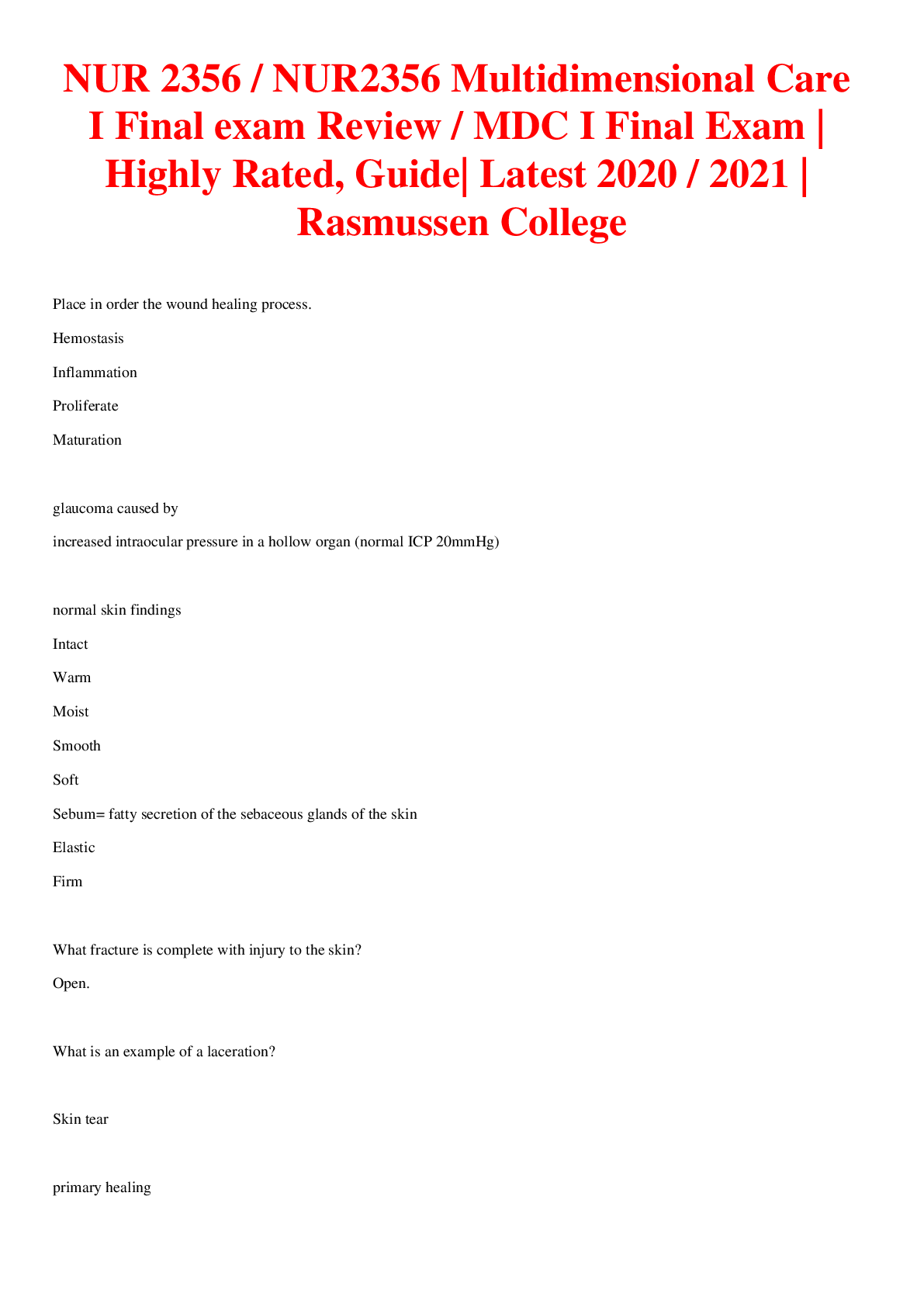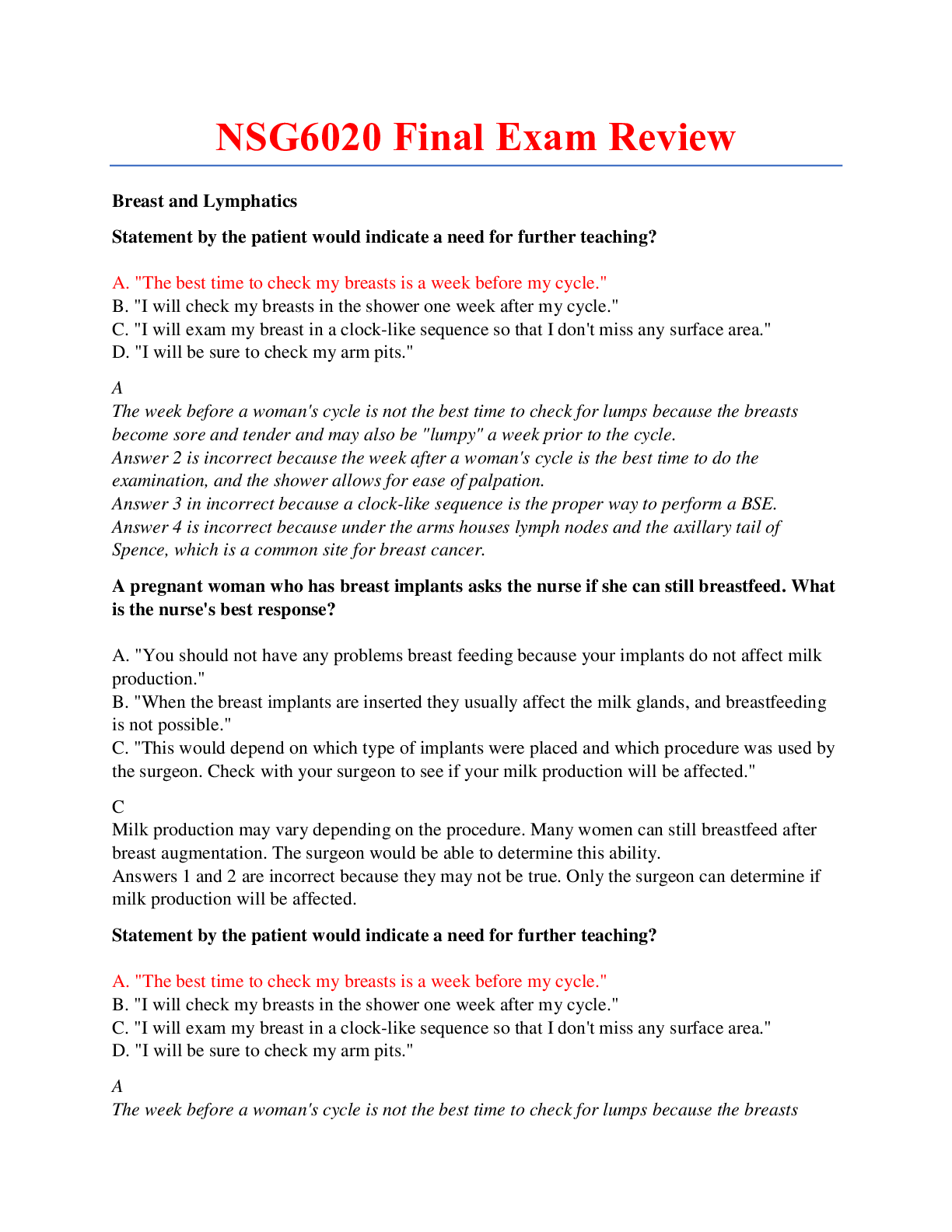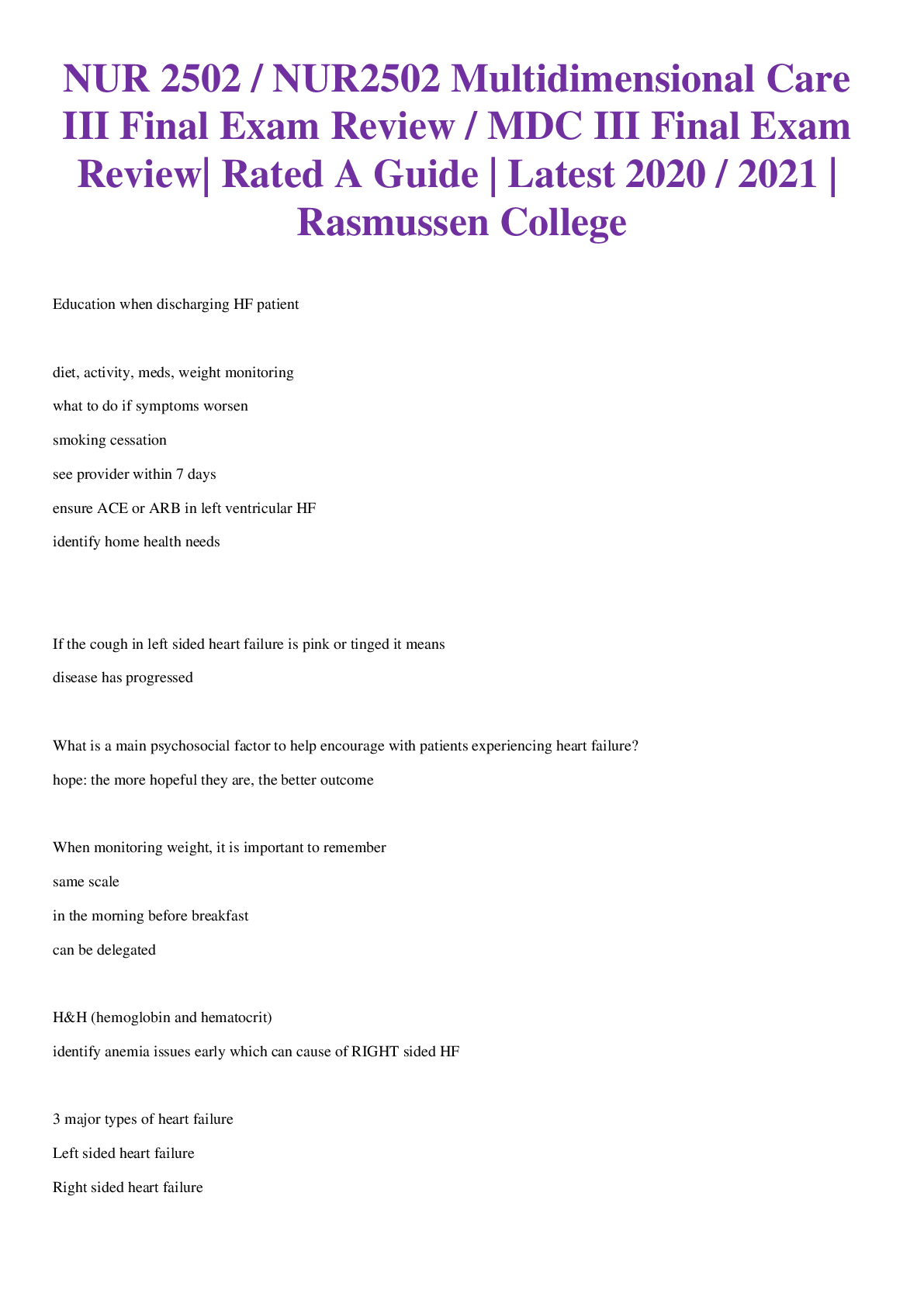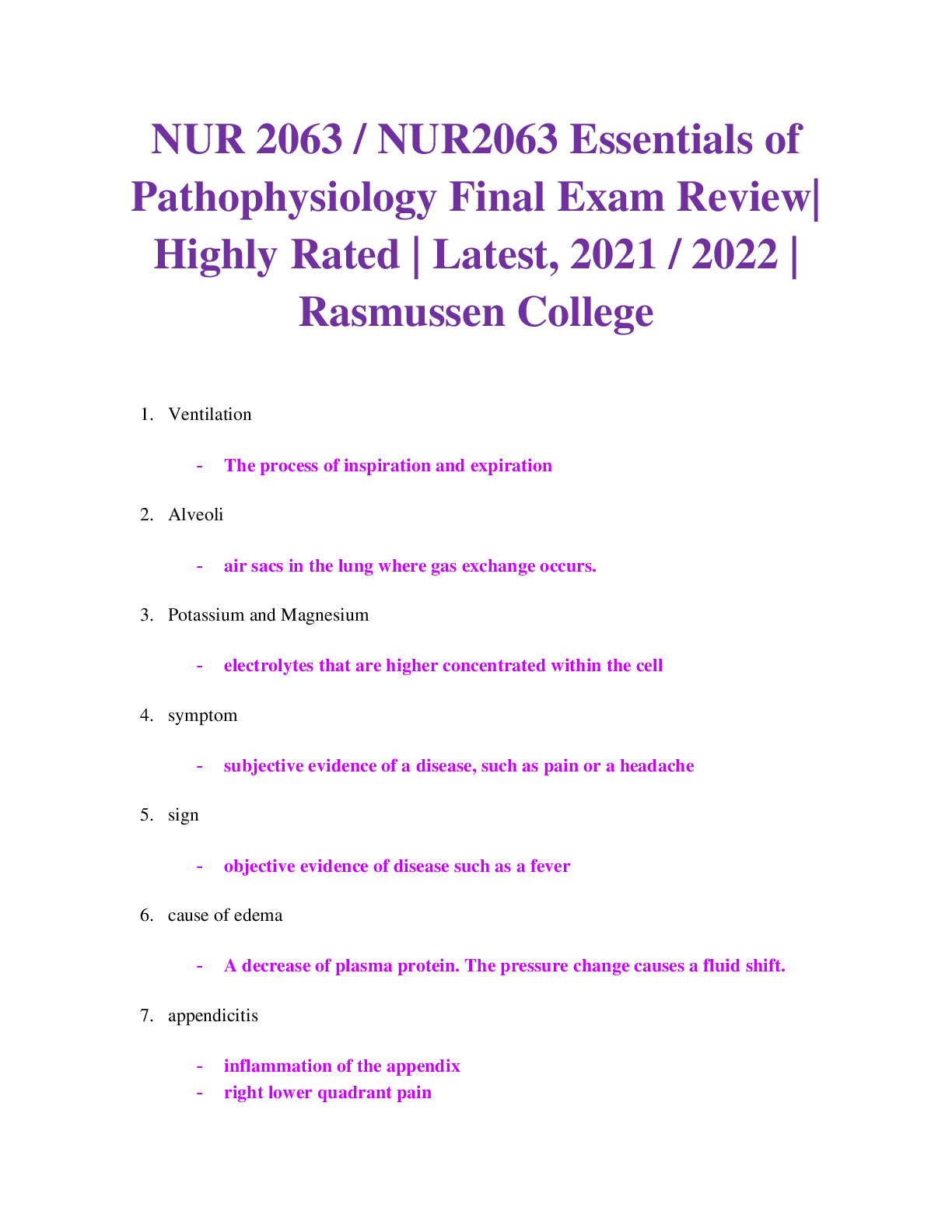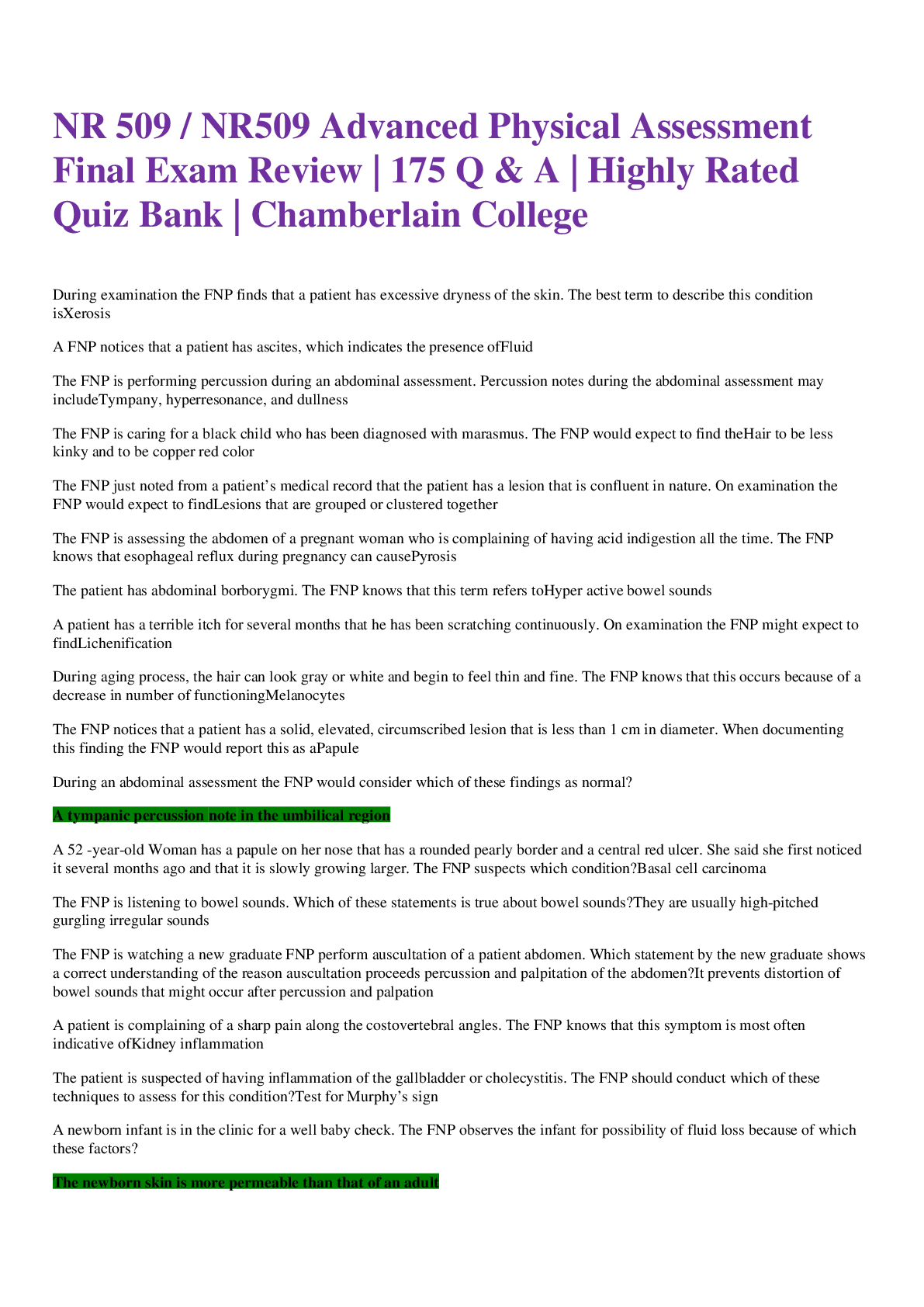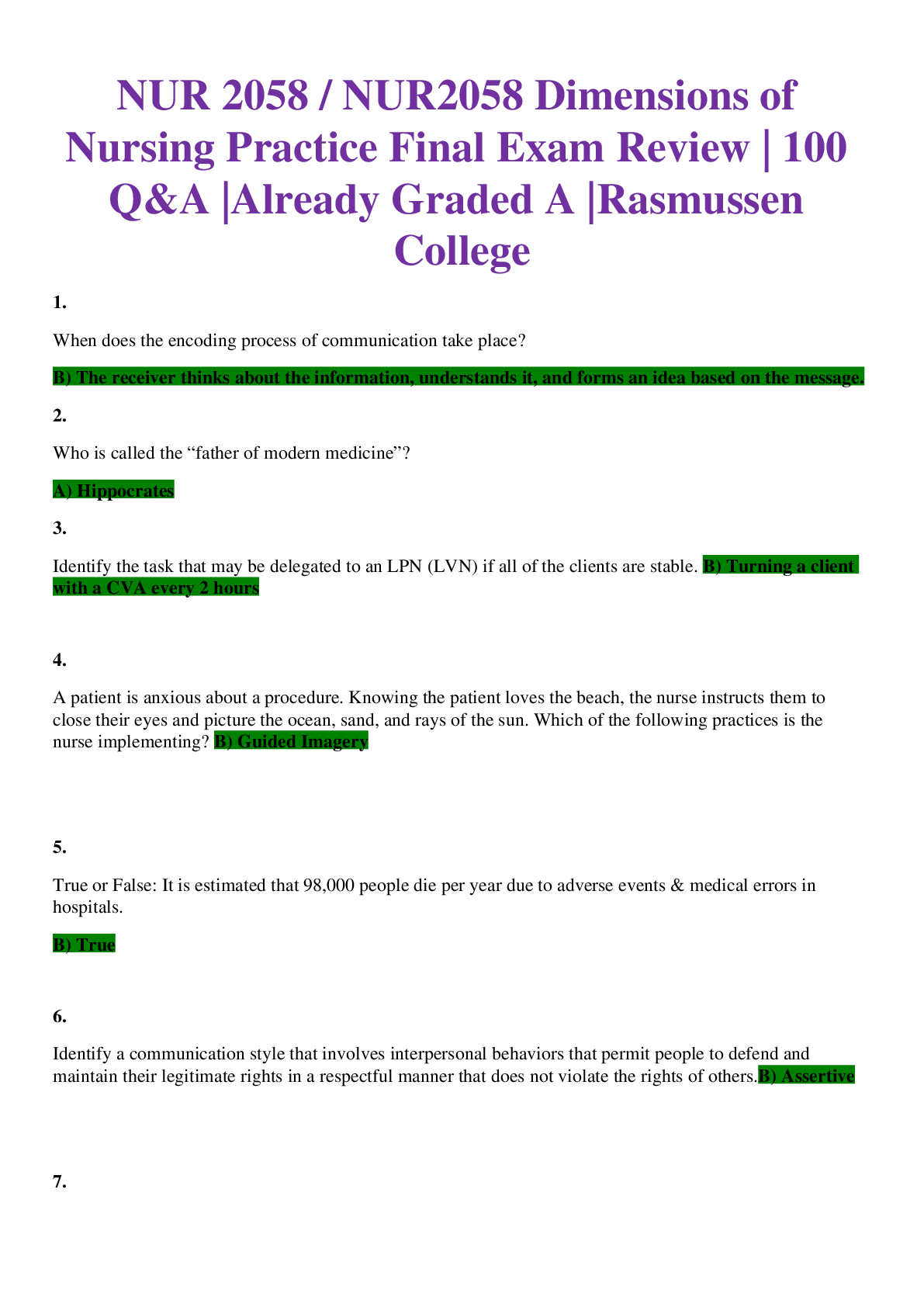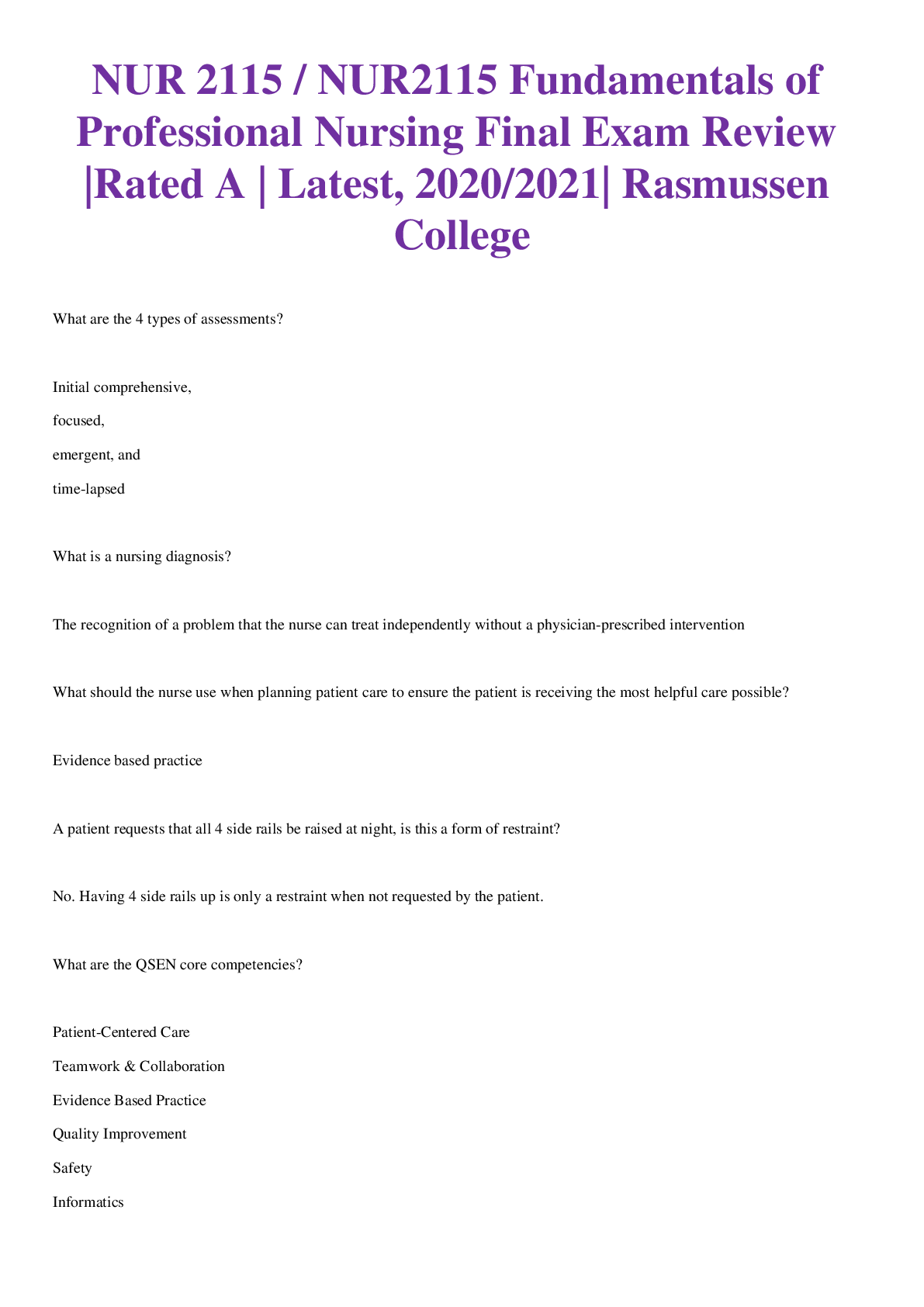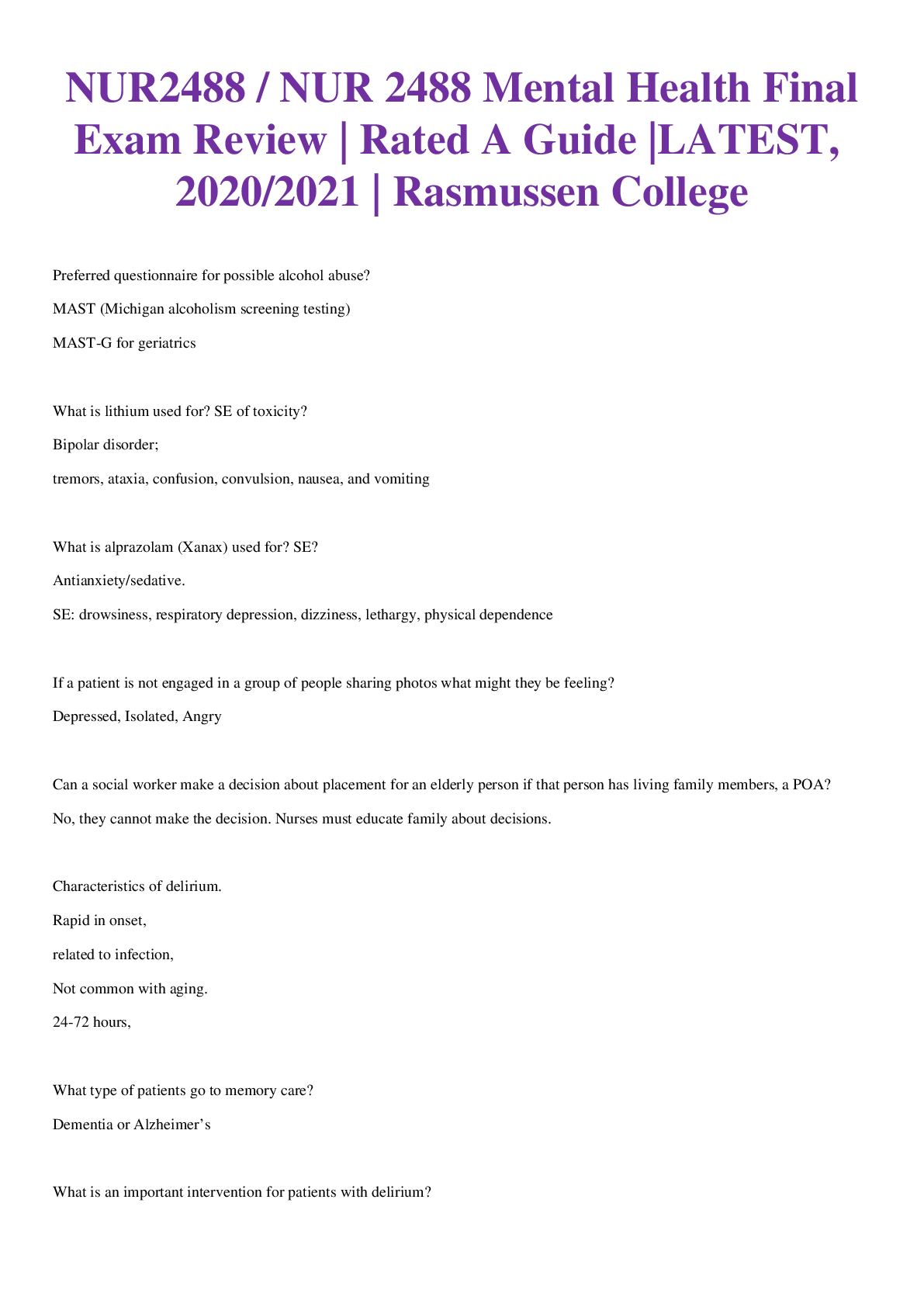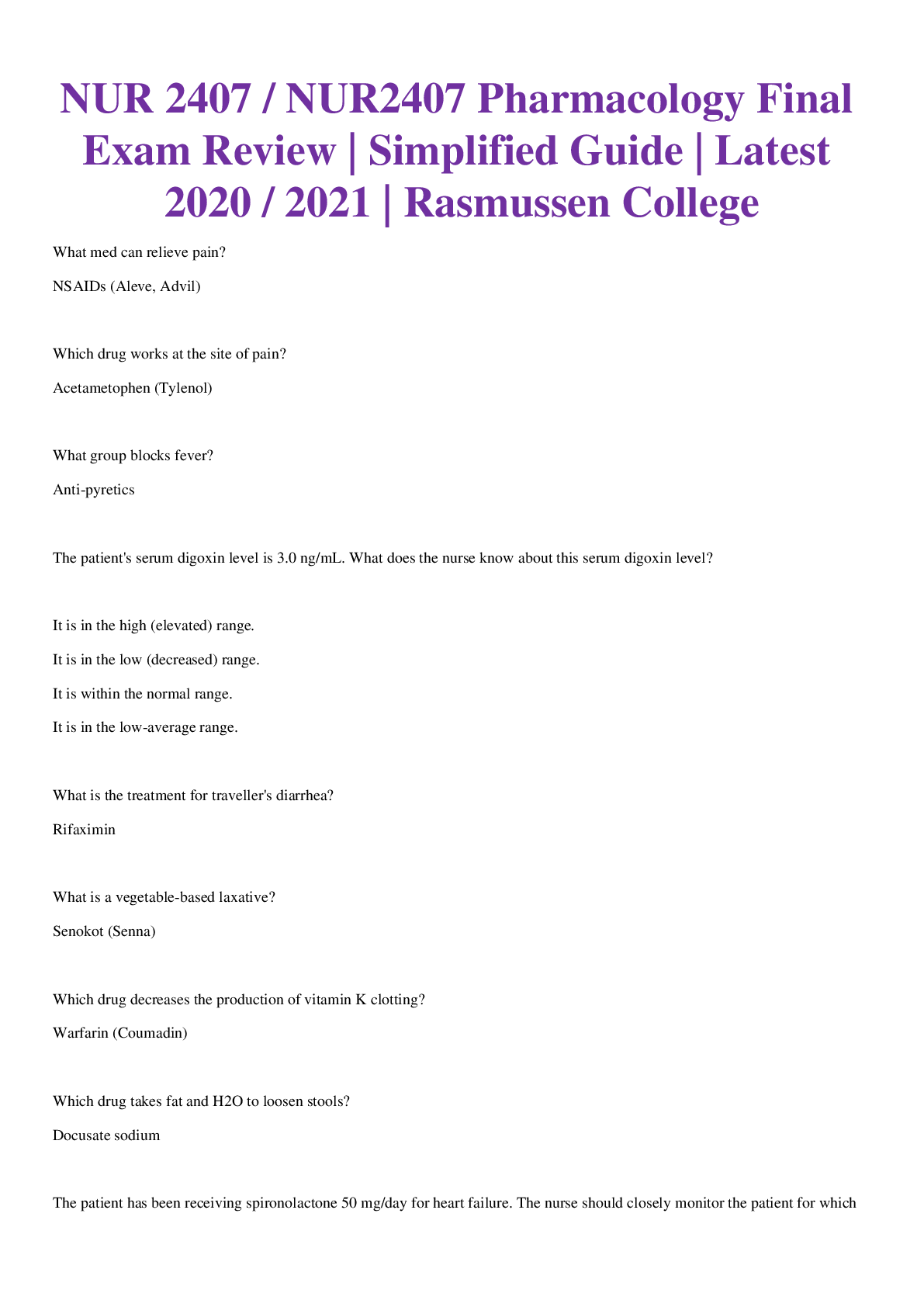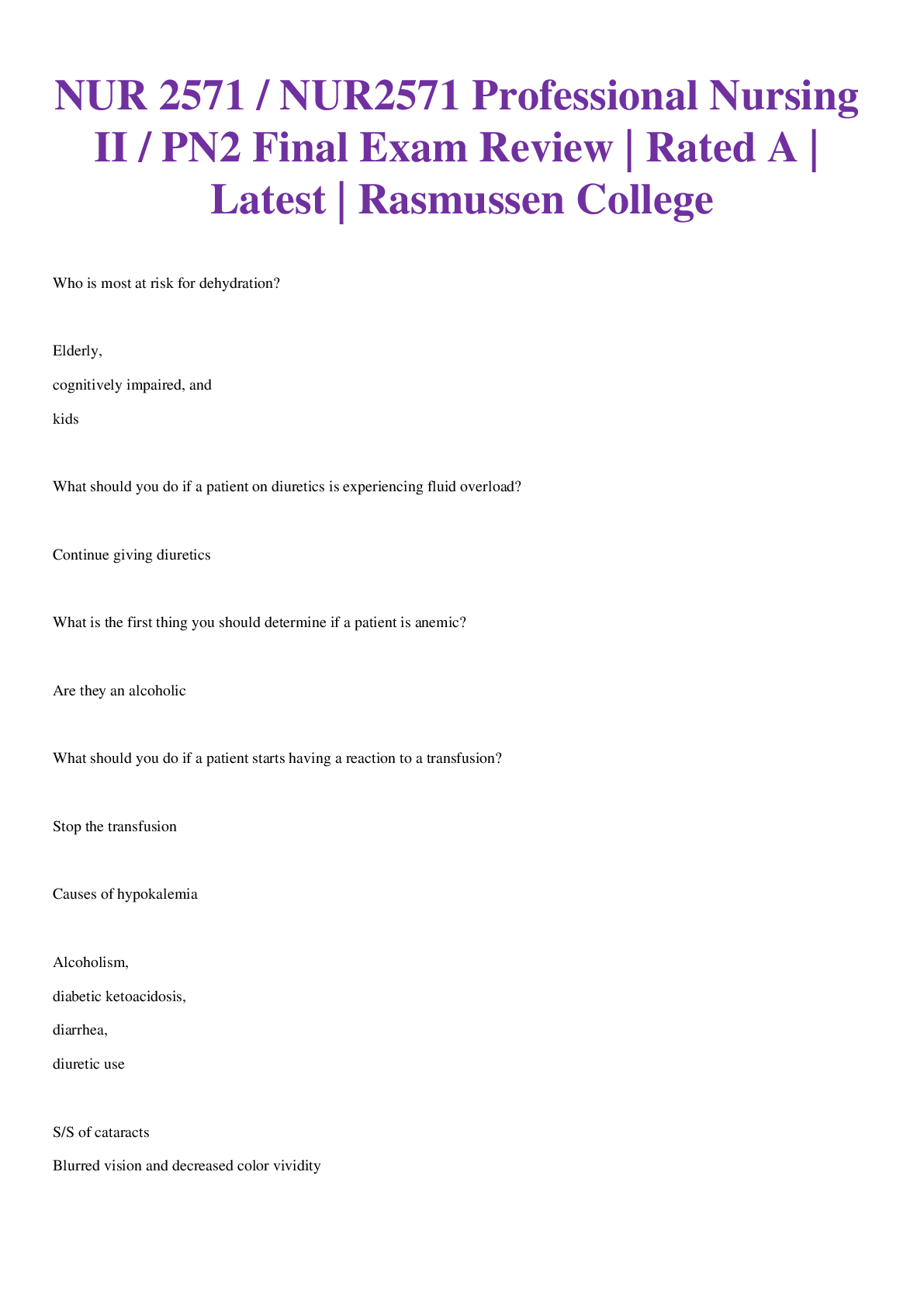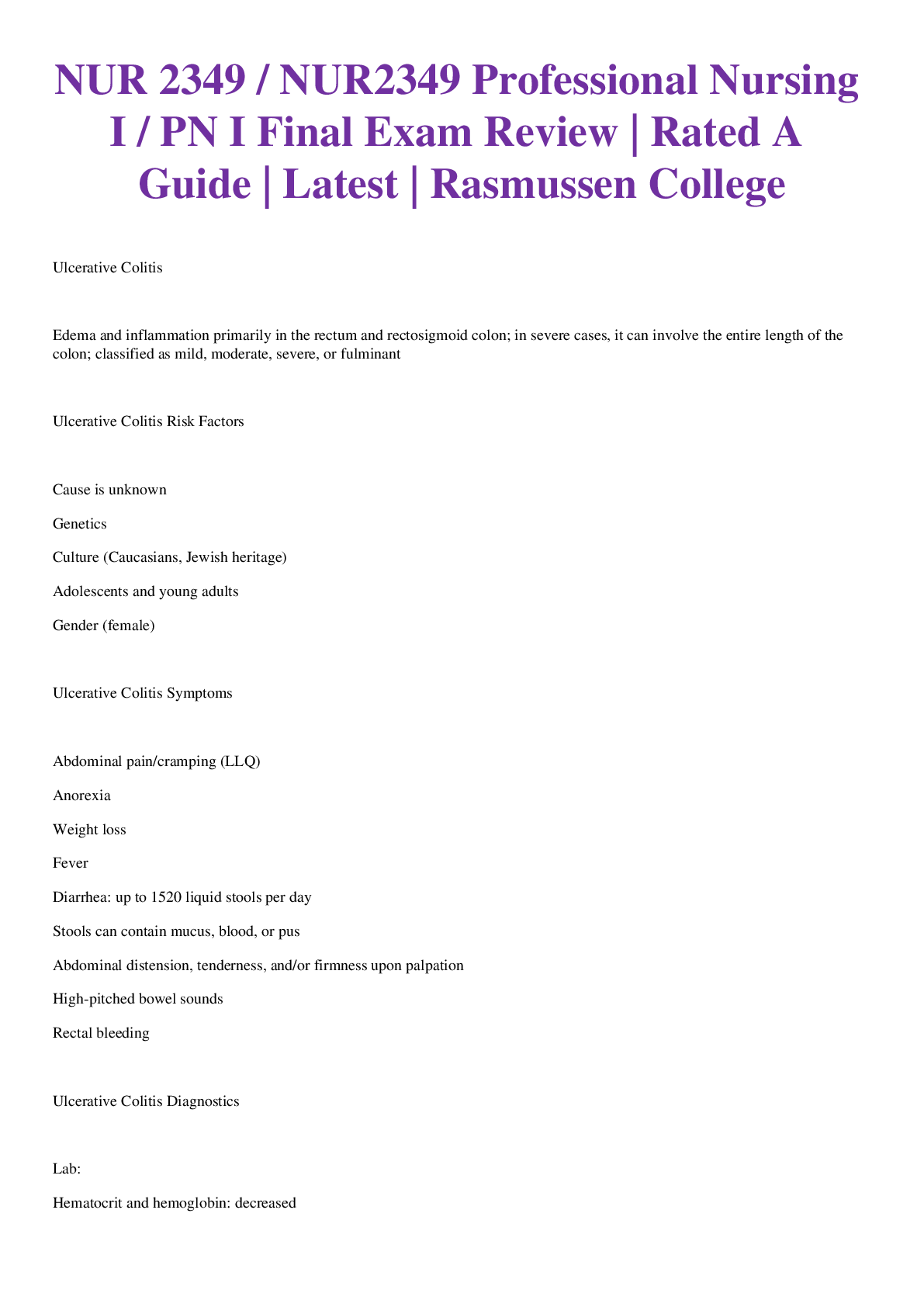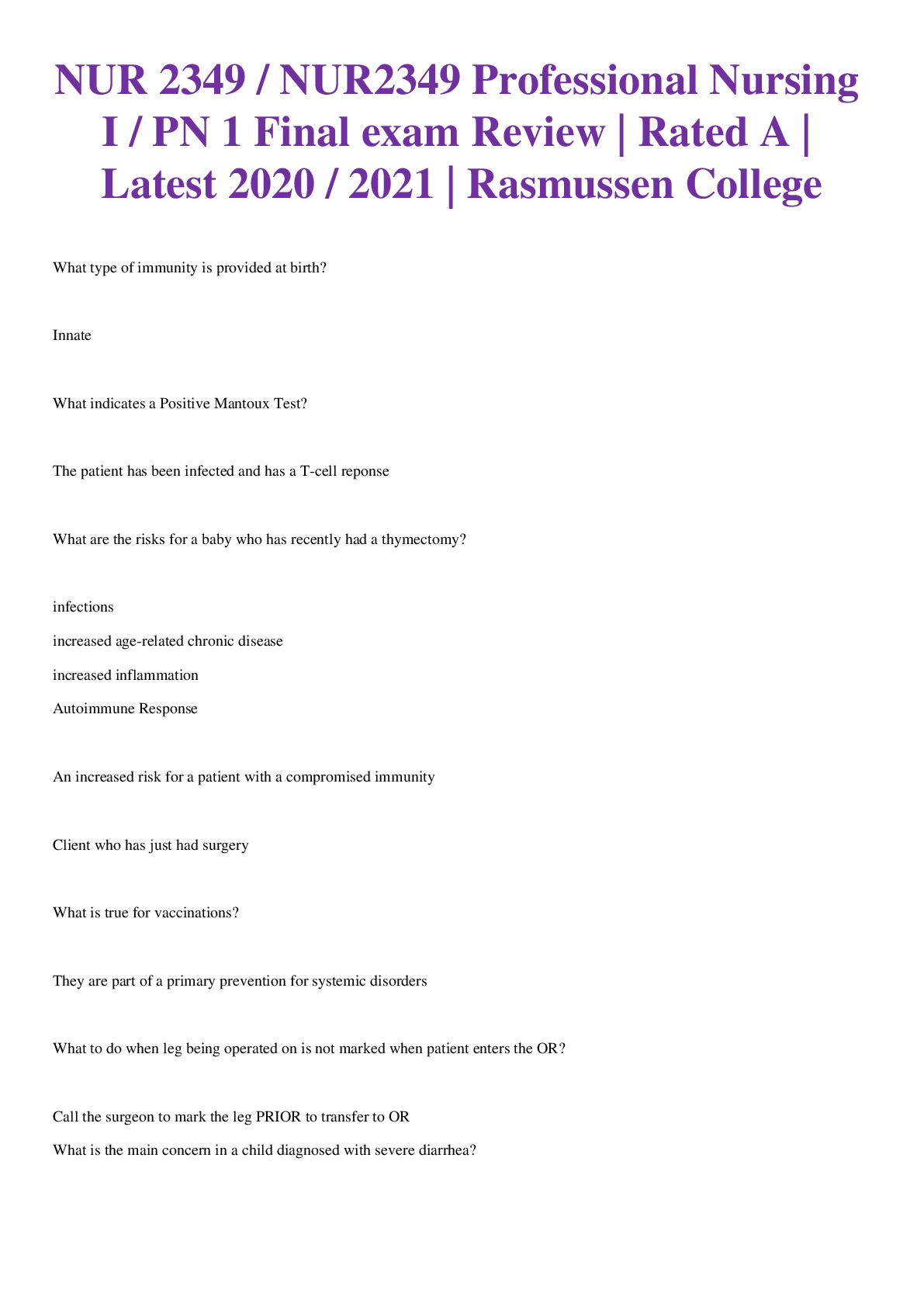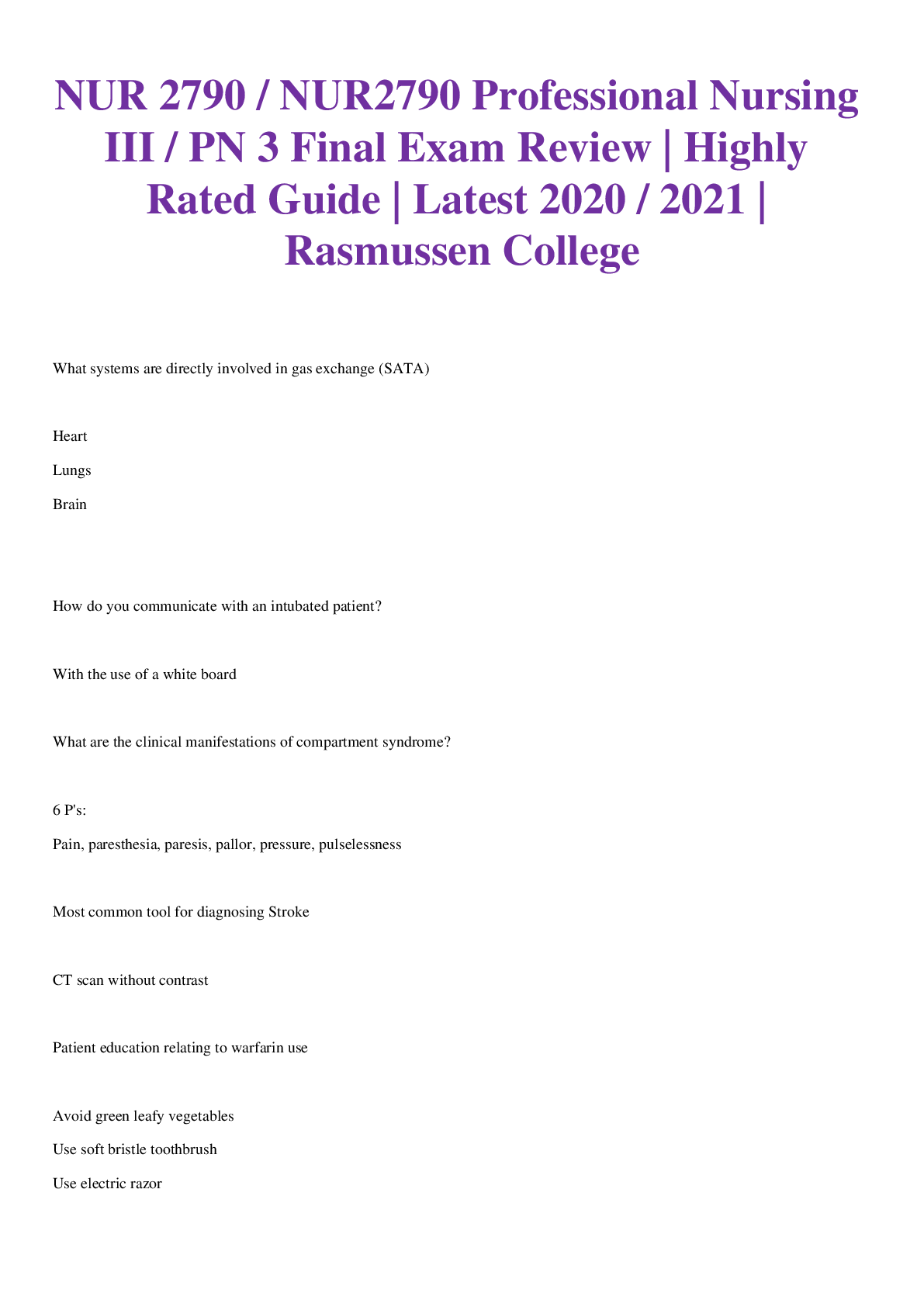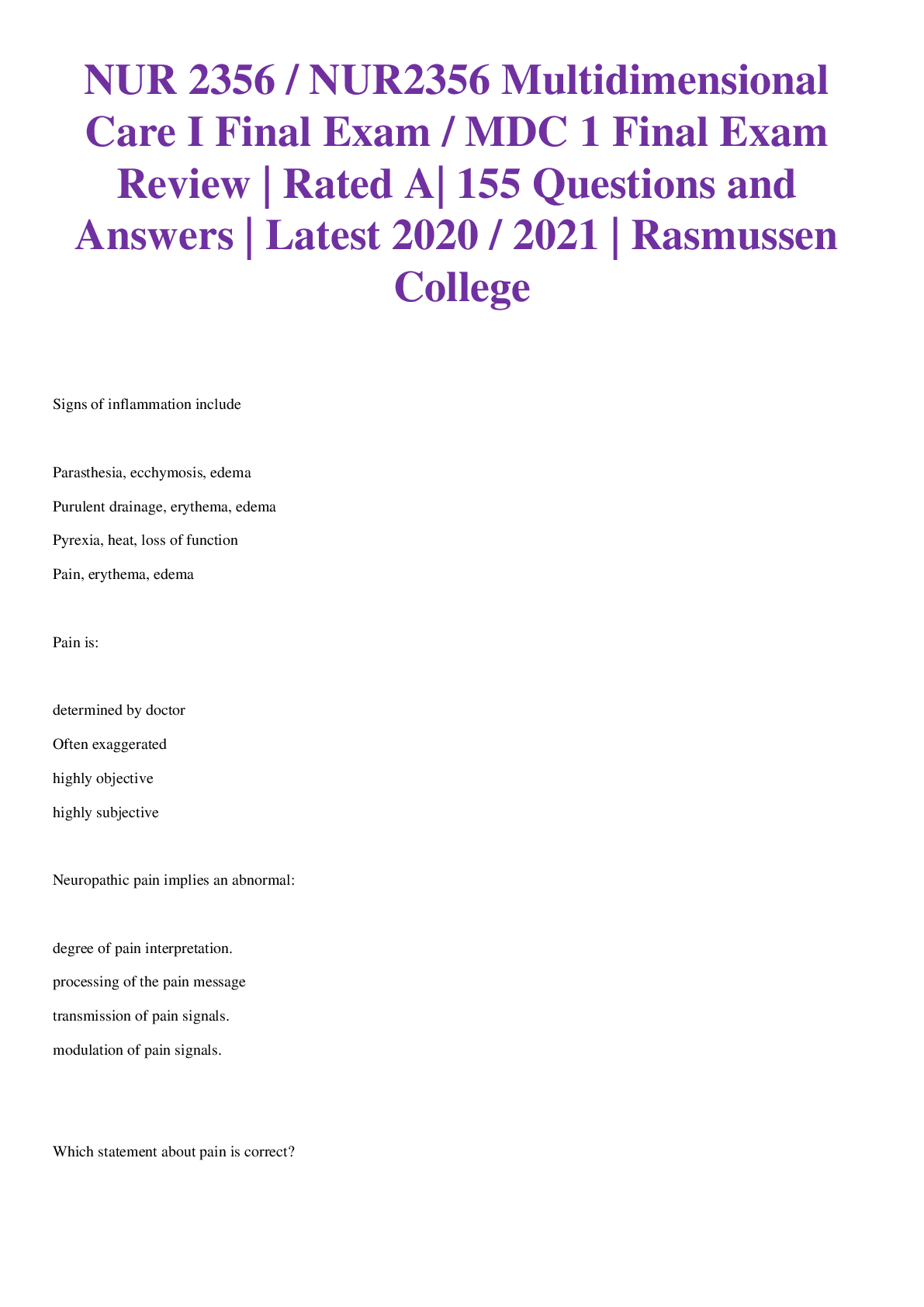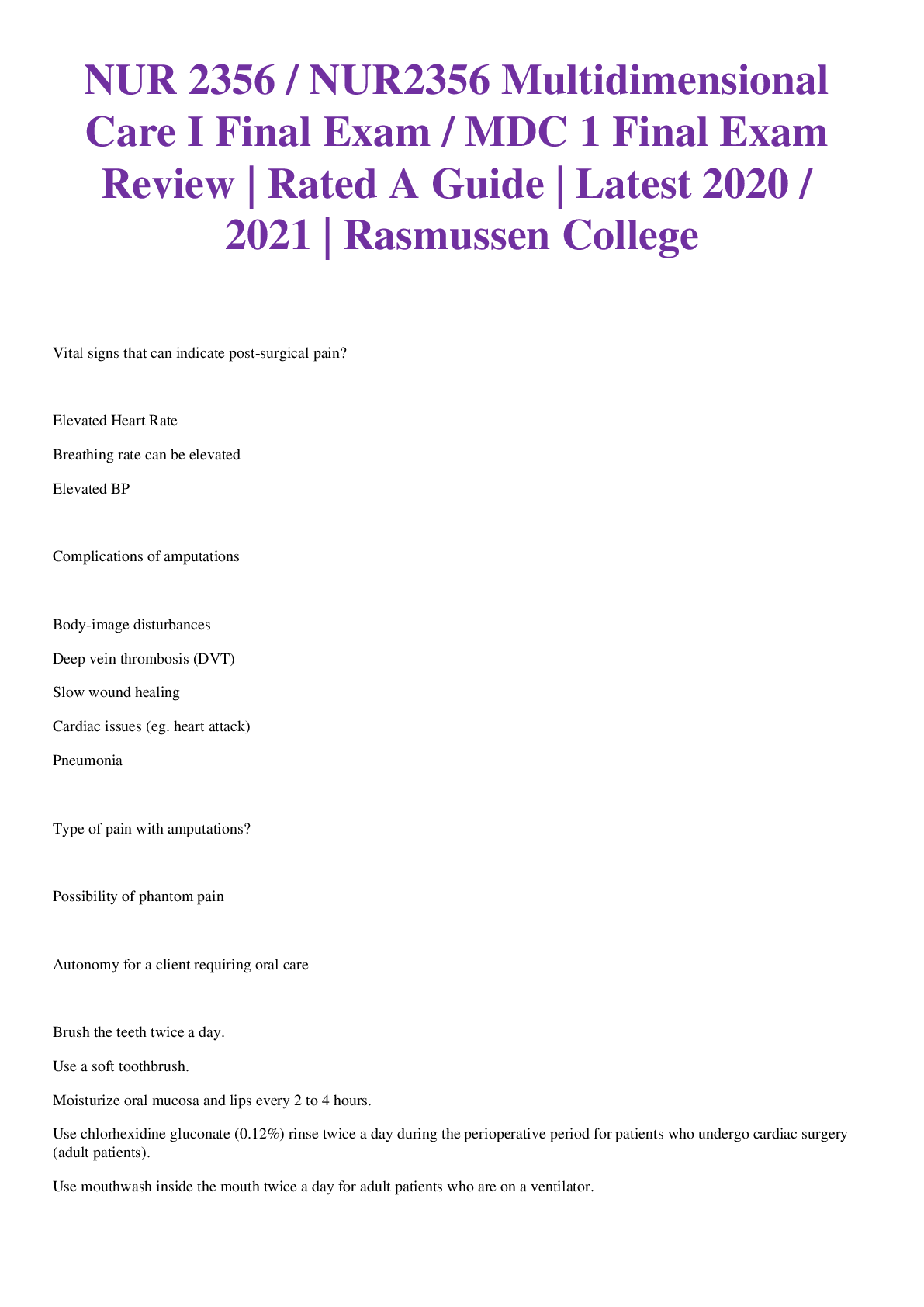*NURSING > EXAM > ADN 235 Final Exam review / 212 Final Exam Study Guide, Question And Answers( Rated A) (All)
ADN 235 Final Exam review / 212 Final Exam Study Guide, Question And Answers( Rated A)
Document Content and Description Below
212 Final Exam Study Guide Exam 1 1. When utilizing an interpreter while taking the history, the nurse knows: the interview may take additional time 2. A patient has a chief complaint of chest pain fo... r the past hour. Which question would be most useful in eliciting the chief complaint: “What does the pain feel like” 3. Physical assessment provides which type of data: Objective 4. The bell of the stethoscope is best for detecting: Low pitched sounds 5. What must be done prior to making a nursing diagnosis: Collect and Analyze data 6. When examining an elderly client, what action by the nurse would be best: Try to minimize position changes 7. During the health history a client bluntly states “I think I am better off dead.” The nurse should respond with: “Are you thinking about suicide” 8. The client exclaims “I am sorry I am late for my appointment, But I ran into so much traffic on the way here.” She is out of breath and her face is red. VS: P 100, R 30, BP 150/90 T 98 F. Appropriate action: Document VS and retake in 5 minutes 9. The purpose of percussion on the abdomen is to: assess organ and tissue density 10. Knowing the clients current state of health and reason for seeking care will help the nurse: Prioritize the client’s teaching needs 11. During a primary prevention assessment: Immunizations needed and previously received should be identified 12. The steps of the nursing process include: Assessment, Diagnosis, outcome identification, Planning, Implementation, and Evaluation 13. The nurse sees a patient with nonspecific complaints and has physical assessment findings that are within normal limits, but further assessment finds a problem. What type of problem solving: Intuitive 14. Patient tells the nurse, “I can never seem to get warm lately and decided to come to the clinic.” Nurse records this under: Reason for seeking care 15. Best describes the nursing process: It is ongoing and continuous 16. Situation that requires an emergency assessment: Sally, who took a drug overdose 17. Health education programs in high school to inform students about STD’s is an example of: Primary Prevention 18. Second level priority problems include: Infection and change in mental status 19. A patient is being discharged from an acute care facility following treatment for thrombophlebitis. Nurse assesses the client and notes that the patient’s leg is pain free and no redness or edema. Step of the nursing process: Evaluation 20. Measured respiratory rate of 16 respirations per minute for an adult patient. The nurse should: document the measurement in the medical record 21. Primary data source for a 2 year old patient: Toddler 22. A 75 year old man has a history of HTN and was recently changed to a new antihypertensive drug. He reports feeling dizzy at times. Nurse should evaluate BP by: assess blood pressure and pulse in the supine, sitting, and standing positions 23. The nurse will perform a palpated pressure before auscultating BP for: detecting the presence of an auscultatory gap 24. Assessment for determining the presence of crepitus, swelling, and pulsations: Palpation 25. When assessing a patient’s pulse, the nurse should also notice: force 26. A 75 year old patient has asthma and is in a tripod position (leaning forward, arms braced on the chair). The nurse should: recognize that a tripod position is often used when a patient is having respiratory difficulties 27. A patient’s weekly BP reading for 2 months have ranged between 124/84 and 136/88, and an average of 126/86 mm Hg. The nurse knows that this BP falls within: Prehypertension Stage 28. A component of the general survey: Observing the patient’s body stature and nutritional status 29. Client’s BP is 170/100. The pulse pressure is: 70 30. Strategy that is most effective for the nurse to use to help the client feel that they have an active role in health care: Ask client for their description of events and for their views concerning past medical care 31. The most appropriate action the nurse should take when performing a physical examination to protect the examiner and patient against spread of infection: Wash hands before and after every physical patient encounter 32. Statement that is true regarding precautions in the healthcare setting: Standard precautions are intended for use with all patients regardless of their risk or presumed infection status 33. The nurse should measure rectal temperatures in: Comatose adult 34. A nurse helping at a health fair at a local mall and takes blood pressure on a variety of people noting that: A black adult’s BP is usually higher than that of whites of the same age 35. A 70 year old has a BP of 150/90 in a lying position, 130/80 in a sitting position, and 100/60 in a standing position. Nurse should evaluate these findings: The change is BP is abnormal and should be reported to the PCP ..........................Continued [Show More]
Last updated: 1 year ago
Preview 1 out of 14 pages

Reviews( 0 )
Document information
Connected school, study & course
About the document
Uploaded On
Feb 12, 2021
Number of pages
14
Written in
Additional information
This document has been written for:
Uploaded
Feb 12, 2021
Downloads
0
Views
36

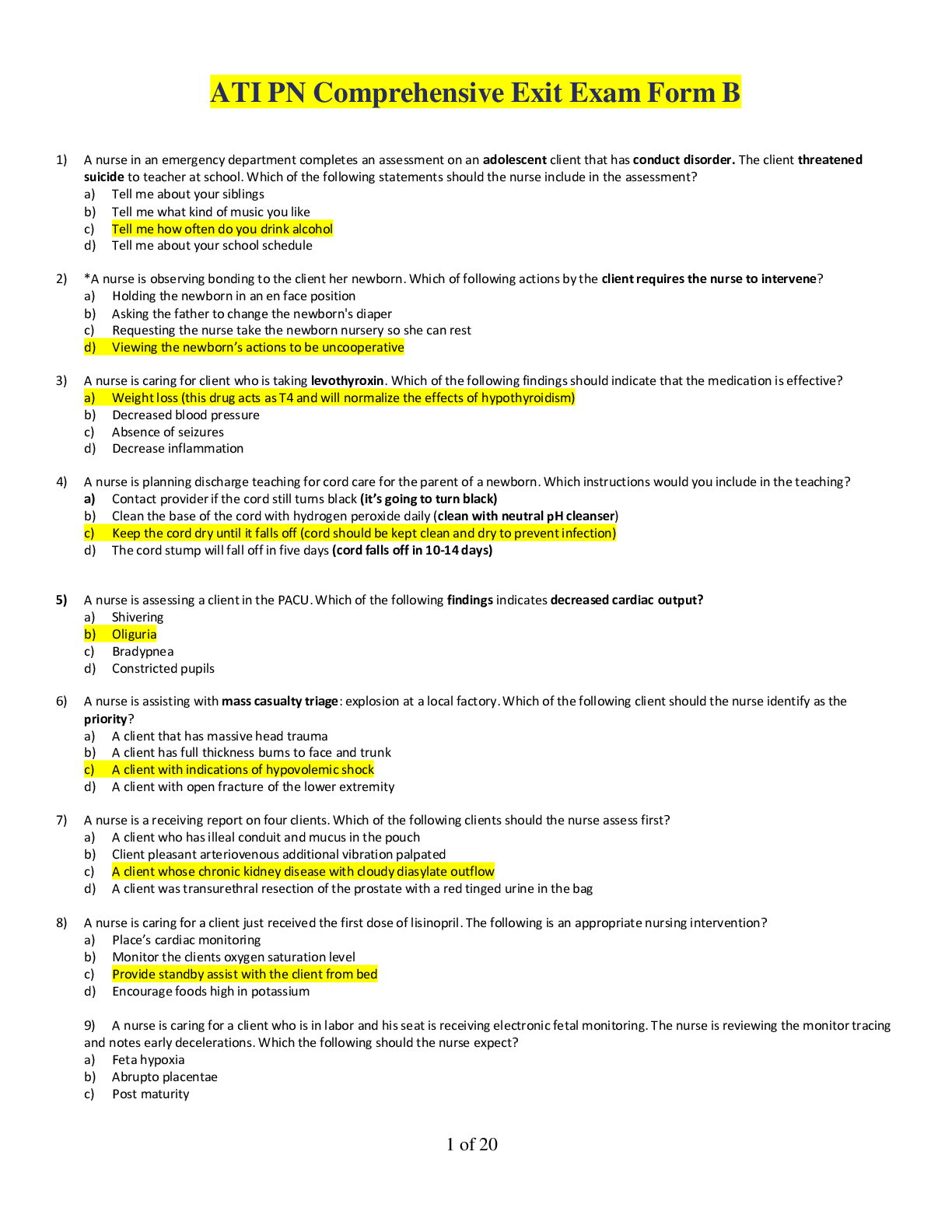
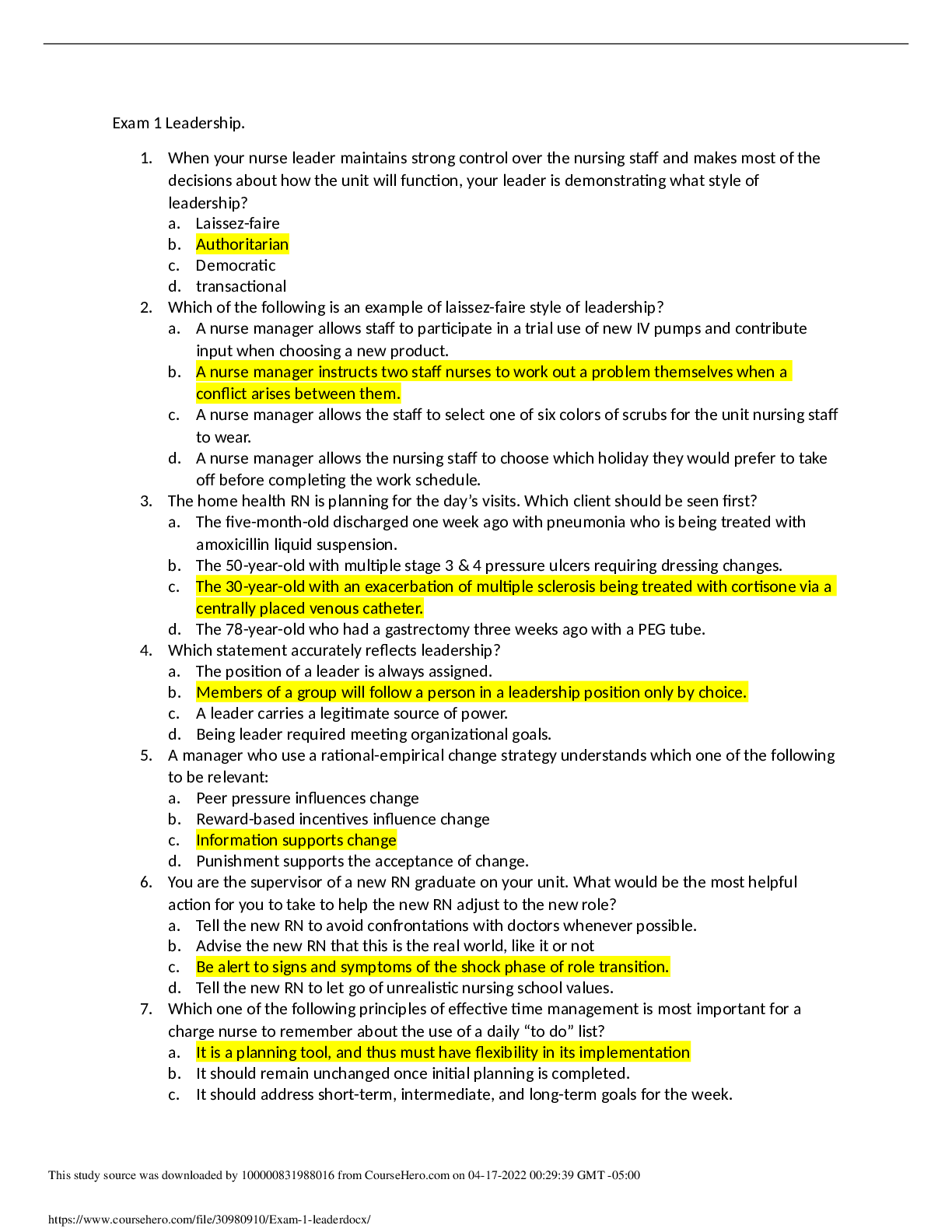


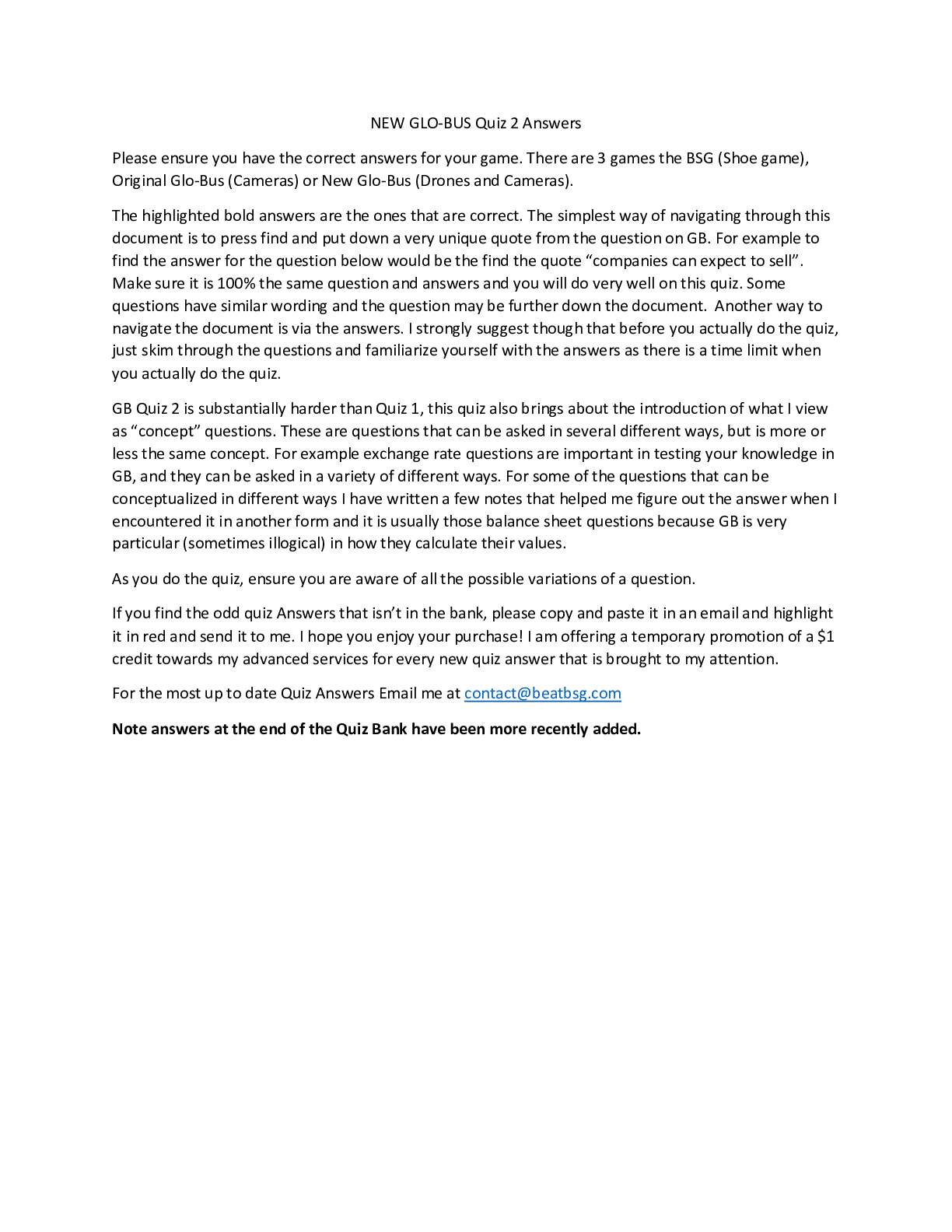
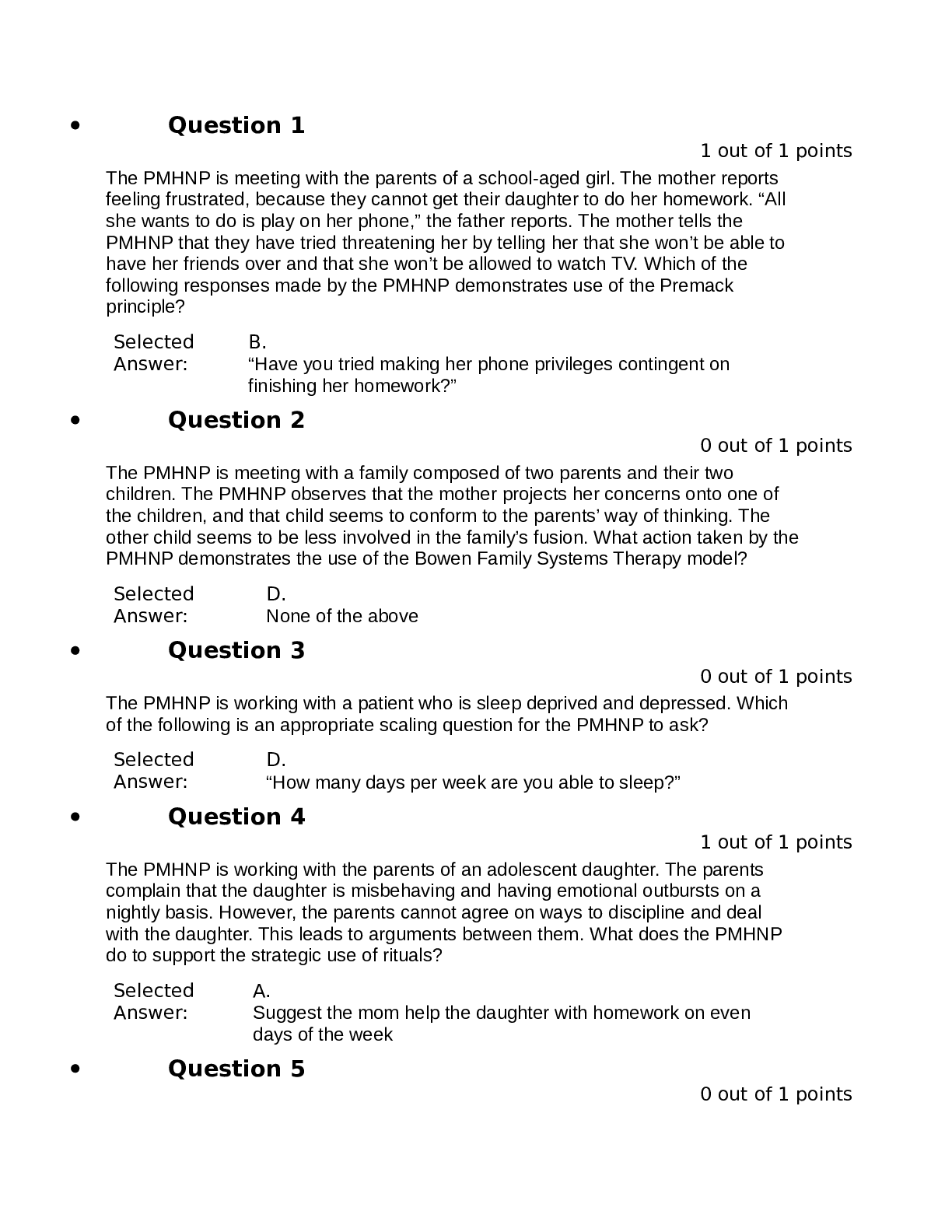
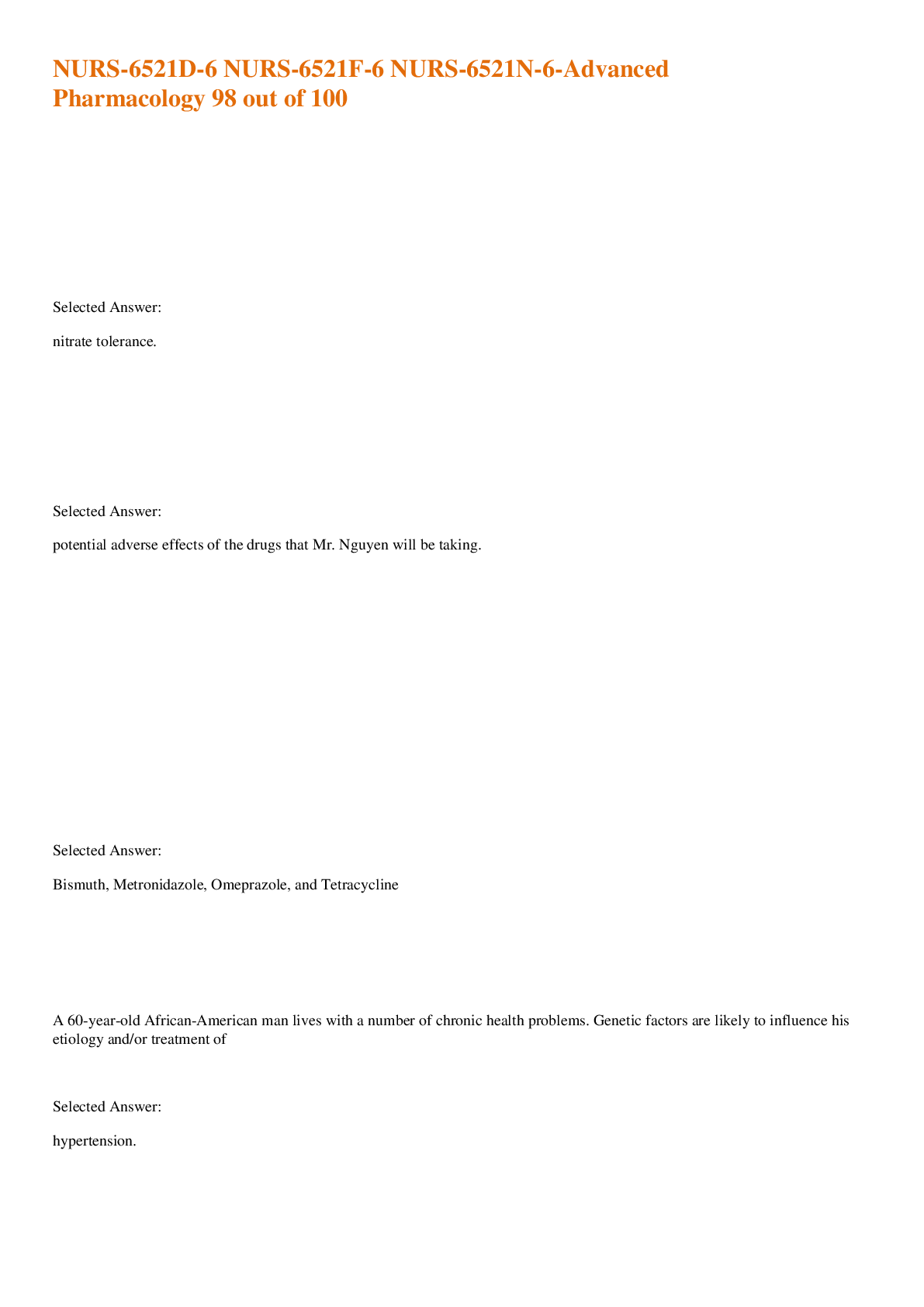
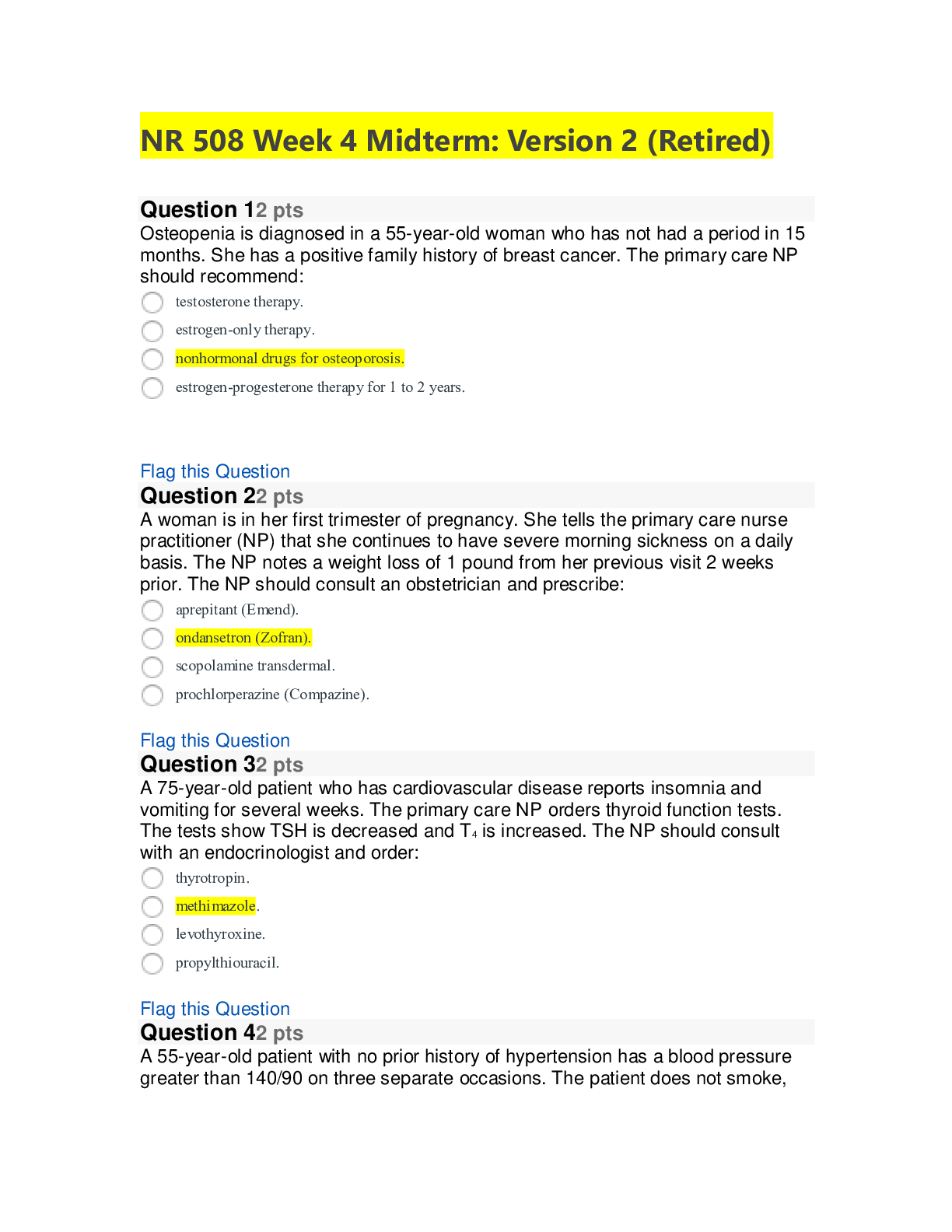



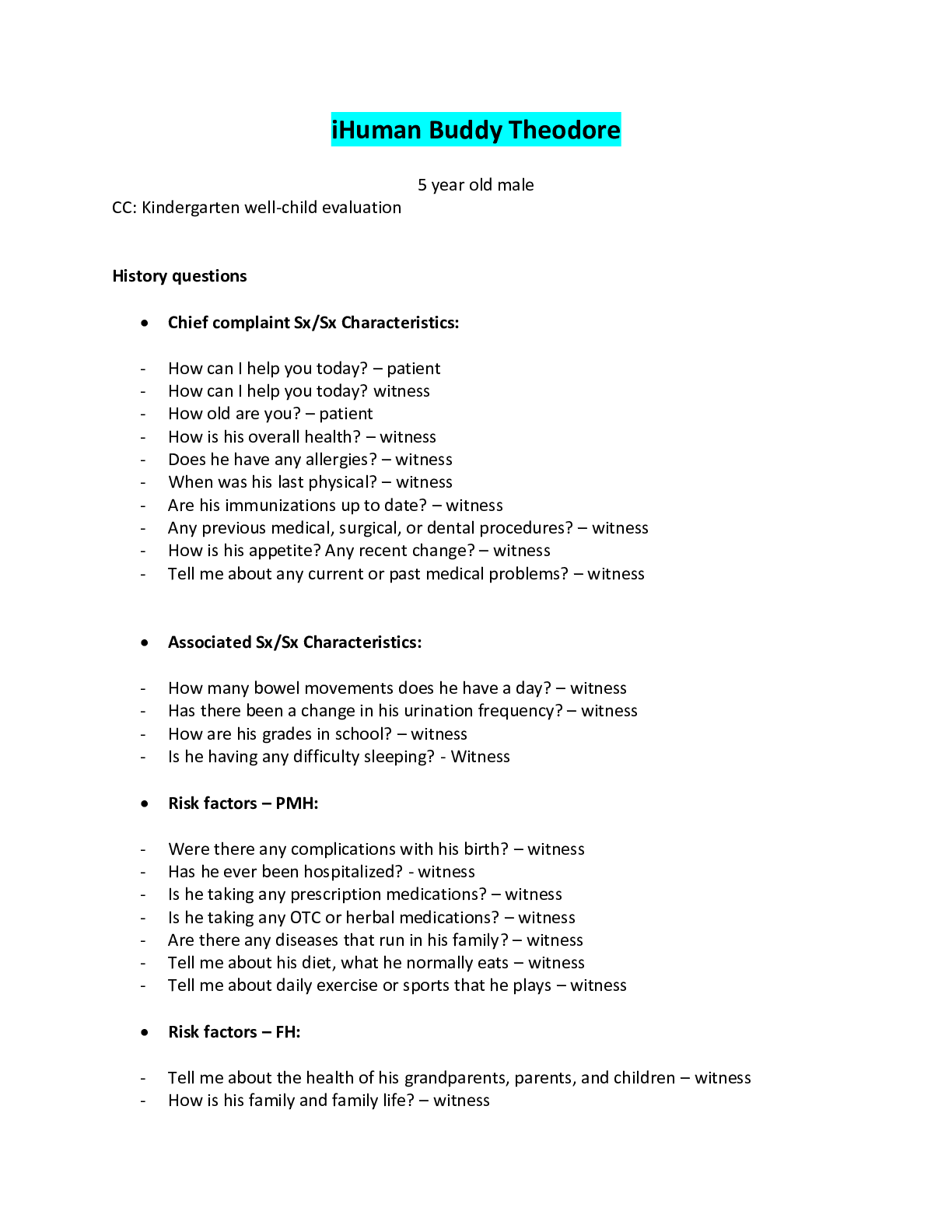

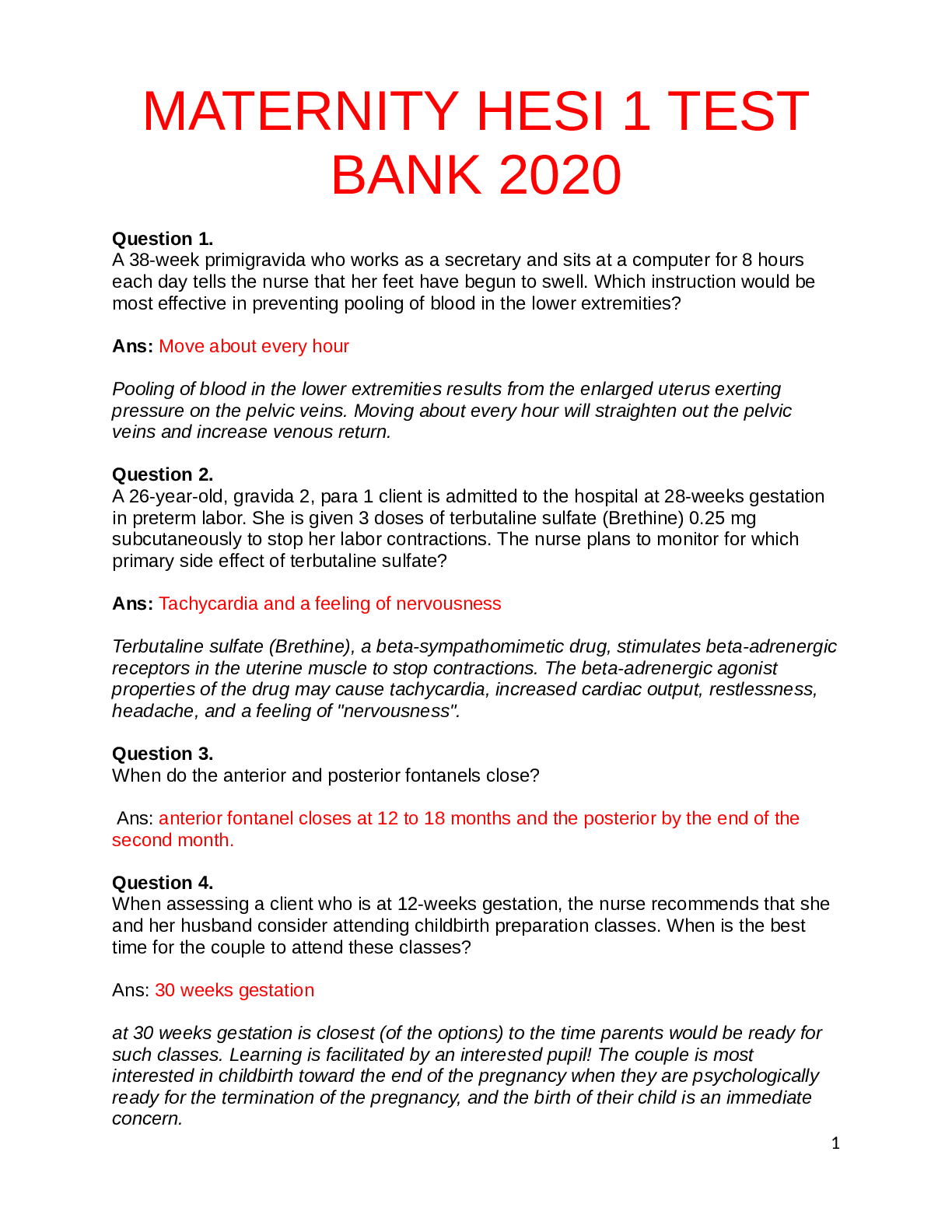
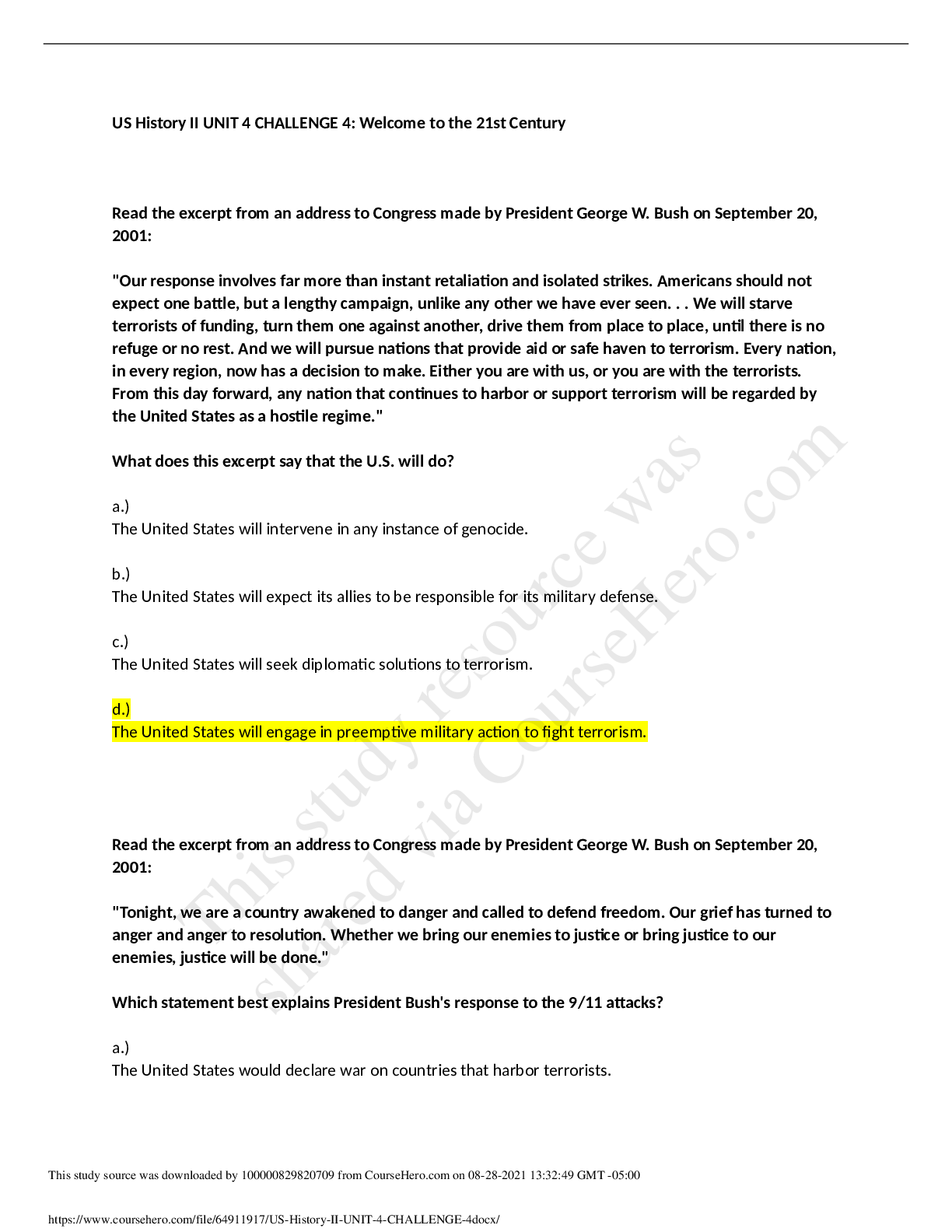
.png)
